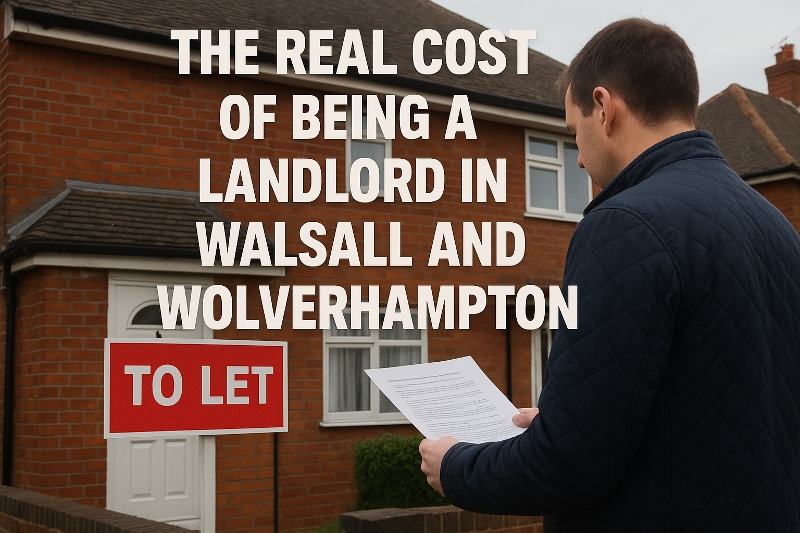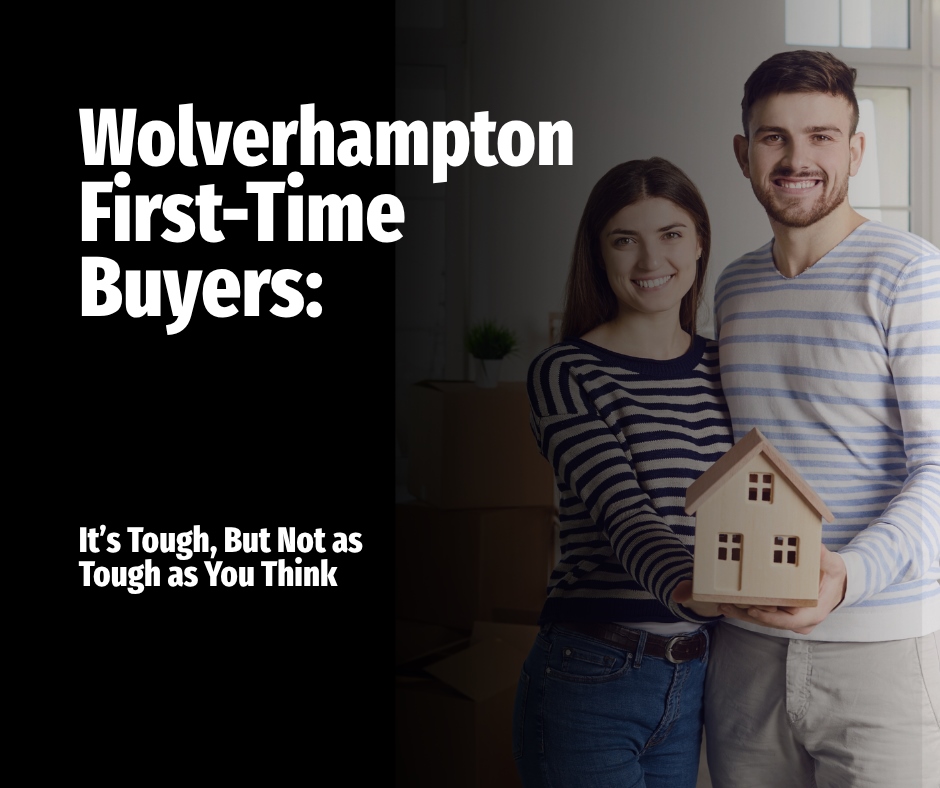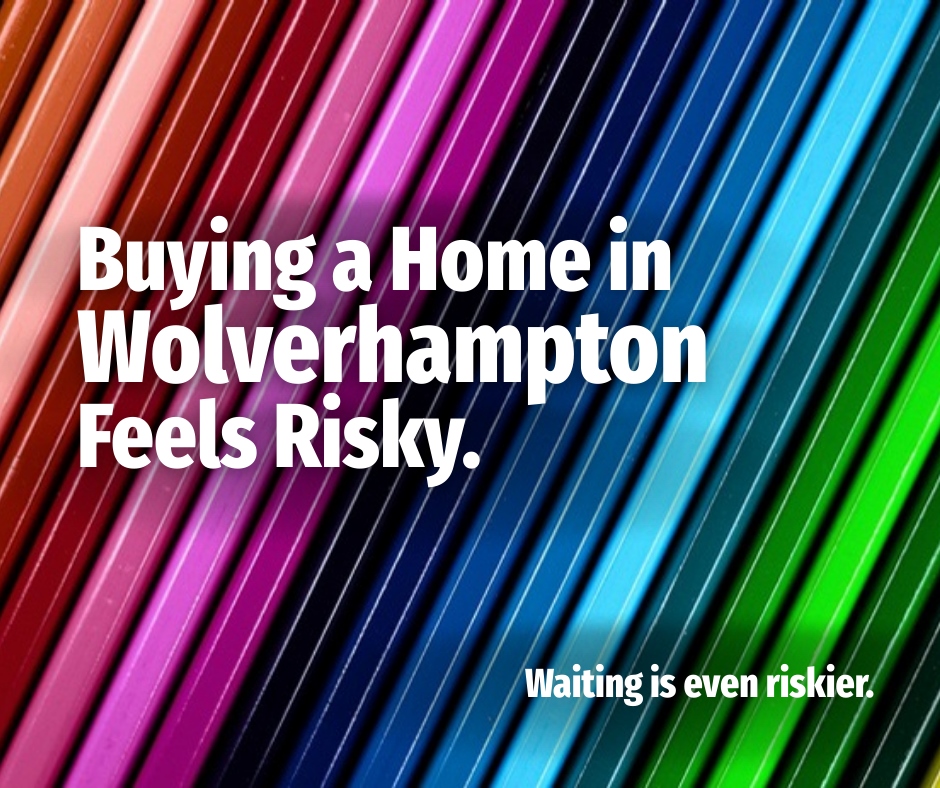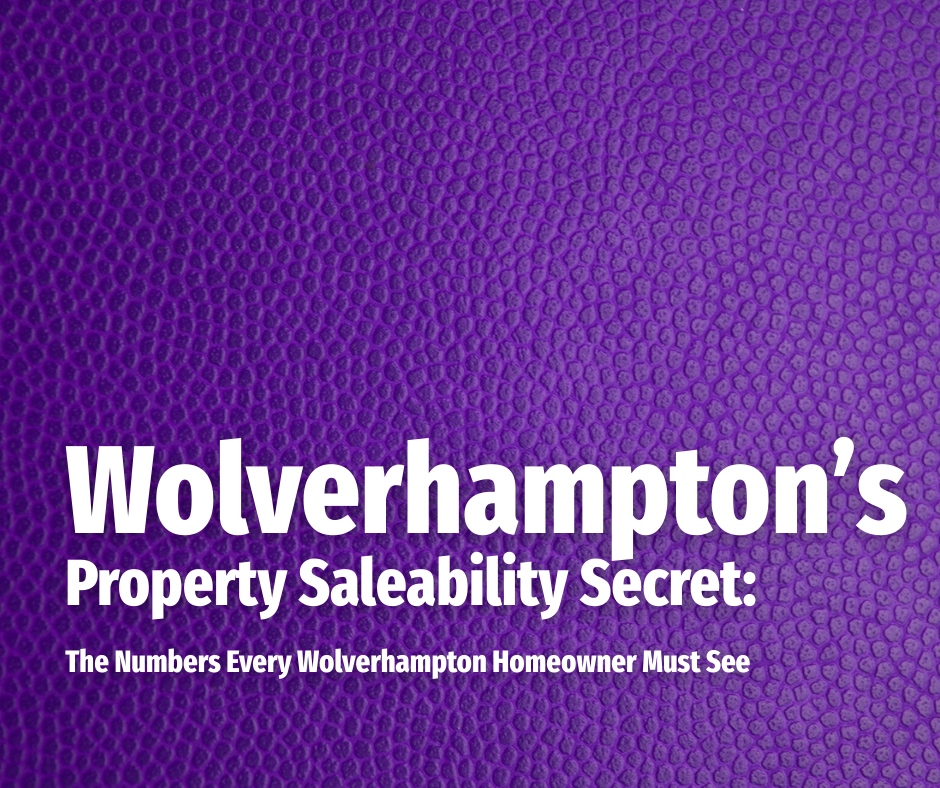Blog
- Details
Becoming a landlord can be a rewarding way to generate regular income and build long-term wealth through property. Alongside the rental returns, property values typically rise over time, creating strong potential for capital growth.
However, letting a property is not simply about collecting rent — there are many costs to consider. Being fully aware of these ensures you invest wisely, avoid surprises, and protect your profits.
Upfront Costs of Buying a Rental Property
If you’re purchasing a buy-to-let rather than using a property you already own, the initial outlay can be significant:
- Deposit – Buy-to-let mortgages usually can 25%–40%.
- Stamp Duty Land Tax (SDLT) – In addition to standard SDLT, a 5% surcharge now applies to second homes and buy-to-lets (from April 2025).
- Legal & Survey Fees – Conveyancing typically costs £1,000–£2,500, with surveys ranging from £250–£1,000.
- Mortgage Fees – Some lenders charge arrangement or valuation fees.
Financing Costs
Some landlords opt for interest-only mortgages, keeping monthly payments lower. Broker fees may also apply if you use an intermediary.
Ongoing Running Costs
Successful landlords budget for the day-to-day expenses of property ownership:
- Insurance – Buildings insurance is essential, but landlord policies provide wider cover such as rent protection and liability (typically £200–£800 annually).
- Ground Rent & Service Charges – Applicable on leasehold properties.
- Maintenance & Repairs – A good rule of thumb is to set aside 1% of the property’s value annually for general repairs, boiler servicing, replacements, and emergency call-outs.
Compliance & Legal Responsibilities
Landlords must meet strict safety and legal obligations, including:
- Gas Safety Certificate (annually, typically £60–£100).
- Electrical Installation Condition Report (EICR) (every 5 years, typically £150–£350).
- Energy Performance Certificate (EPC) (valid for 10 years, £100–£120, minimum rating E — due to rise to C).
- Fire Safety – Smoke and carbon monoxide alarms (typically £50–£100 each).
- Licensing – Some areas require landlord licences (£200–£1,000).
Letting & Management
If you appoint an agent, expect to pay:
- Tenant Find Service – Typically 100% of the first month’s rent.
- Full Management – Typically 10%–15% of monthly rent.
If self-managing, you’ll still face costs for referencing, inventories, and check-ins.
Void Periods & Turnover
Budget for periods without tenants — you’ll cover council tax, utilities, and re-letting costs. Between tenancies, refreshing the property with cleaning, repairs, or redecorating is often necessary.
Tax & Accounting
- Income Tax – Rental profits are taxed at your personal rate.
- Capital Gains Tax (CGT) – Payable when selling, at 18% for basic-rate taxpayers or 24% for higher-rate bands.
- Accountancy Fees – Professional tax advice can be worthwhile.
Hidden & Unexpected Costs
Even with careful planning, landlords should prepare for:
- Rent arrears or legal fees for evictions.
- Damage beyond deposit cover.
- Insurance excesses.
- Future regulation changes (e.g. the upcoming Renters’ Rights Bill).
Final Thoughts
Becoming a landlord in Walsall or Wolverhampton can be a profitable long-term investment, but it requires planning, compliance, and financial discipline. By understanding the true costs involved, you can make informed decisions and maximise your returns.
If you’re considering a buy-to-let or would like expert property management support, our lettings team at Skitts is here to help. Call us on 0121 520 2255 or email us at This email address is being protected from spambots. You need JavaScript enabled to view it.
- Details
It’s Tough, But Not as Tough as You Think
The typical first-time buyer home in Wolverhampton costs £175,170, which is a lot of money in anyone's book.
For years, the housing affordability debate has been framed in terms of house prices compared to average incomes. That makes a neat headline, but it isn't how first-time buyers think. When you are weighing up your first home in Wolverhampton, the question isn't "how many times my salary is the house worth?”. It’s “what slice of our take-home pay will the mortgage swallow each month?”
Looked at through that lens, the story for Wolverhampton first-time buyers is very different from the doom and gloom you often read. Yes, it is tough today, as mortgage payments take 32.3% of a Wolverhampton first-time buyer’s household income.
Yet, history shows there were periods when it was far tougher.
The late 1980s squeeze
Cast your mind back to the late 1980s. House prices were much lower in pound note terms, but interest rates were a punishing 14.4%. In 1989, first-time buyers in Wolverhampton were handing over 45.0% of their household income to cover mortgage payments (the national average was 47.2%). It was brutal.
The point is simple, Wolverhampton house prices were much lower at £43,190 in 1989, but the mortgage burden was far higher. Affordability, in the truest sense, was worse than today.
2007: déjà vu for new Wolverhampton first-time buyers
Fast-forward to the eve of the financial crisis. In 2007, first-time buyers in Wolverhampton had to commit 40.9% of their household income to their mortgage. Sound familiar? Another peak, another squeeze (the national average was 44.2%).
That number matters because it indicates that even in relatively recent history, affordability was worse than it is now. Today's first-time buyers often tell the older generation that “it was easier in your day." The numbers tell a completely different story.
The 2023 peak
Now, let's talk about the recent pain. In 2023, the affordability rate in Wolverhampton reached 34.8% of the household income. That was the highest in over 15 years. Mortgage costs soared on the back of rising interest rates, and many first-time buyers put their plans on ice (the national average was 37.4%).
Yet, and this is crucial, even at the 2023 peak, it was still 14.8% proportionally cheaper than in 2007, and 22.6% more affordable than the late 1980s.
A glimmer of relief for Wolverhampton first-time buyers
Since 2023, the burden for Wolverhampton first-time buyers has started to ease. In 2024, the rate dropped to 33.2%, and by 2025, it had decreased to 32.3%. Still heavy, still demanding discipline, but trending in the right direction.
This shift tells us two things. First, the market is not static as the environment for first-time buyers moves year to year. Second, affordability must be measured not just in pounds on a price tag but as a living, breathing percentage of real household income.
The role of wages and inflation
The average UK home today is £34,000 cheaper than it was in 2022, once adjusted for inflation.
At first glance, that sounds impossible. Let us explain.
The average value of a UK home in 2022 was around £270,000.
However, in the last three years there has been inflation of 11.45%. Therefore, a British home that cost £270,000 in 2022 would need to be worth £304,400 in today’s money to stand still regarding inflation (to have the same spending power). The average UK house price today is £270,400 (just £400 more – or 0.15% more). That gap means the "real" value of a home has dropped by 11.3% - (i.e. 11.45% inflation less 0.15% house price growth makes 11.3%).
Put another way, UK homes are effectively 11.3% or £34,000 cheaper.
At the same time, UK headline wages are 16.28% higher since 2022. Take inflation off that wage rise (16.28% wage growth less 11.45% inflation) and real ‘after inflation’ wages are 4.83% higher since 2022. So while headline house prices in headline (nominal) terms have flatlined, buyers’ actual spending power has strengthened.
That combination is rare. Properties are 11.3% cheaper in real terms, and incomes are 4.83% higher in real terms. Add to that the fact that interest rates, while still not at the levels seen in the 2010s (and they never will be again), rates are beginning to edge down, and more homes are coming onto the market, and the balance has shifted. Buyers now have more choice, and crucially, more negotiating power.
This wider backdrop matters. Inflation has taken a significant bite out of family budgets, but unlike the late 1980s, wages have also been rising. That is why the proportion of income going on mortgage payments hasn't rocketed back to the eyewatering levels we saw a generation ago.
Why the headline asking price of homes distracts us
A Wolverhampton starter home today looks eyewatering when you compare it with salaries. But the raw multiple of income to house price is a misleading way to judge affordability. What matters is whether the monthly mortgage outgoings are sustainable.
This perspective also explains why so many buyers do eventually take the plunge. A £200,000 headline asking price with a £190,000 mortgage may seem daunting, but a monthly payment of £995, once wages are factored in, can feel more achievable.
Peaks and troughs in perspective
History shows the journey is cyclical. There are peaks, there are troughs, and affordability is always more nuanced than the headlines suggest.
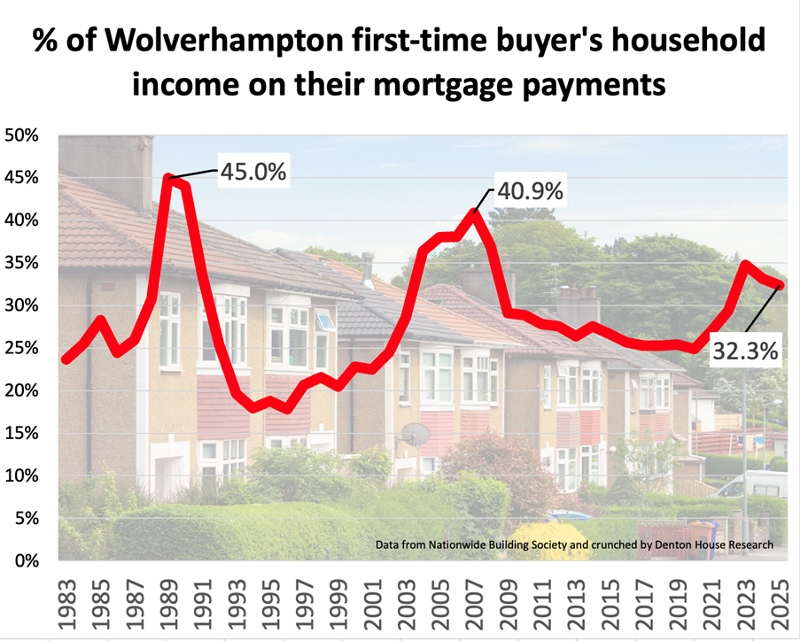
Final thought
Buying your first home in Wolverhampton will never be "easy." It takes saving, sacrifice, and the courage to make a commitment. But don't fall for the myth that it is uniquely impossible today. Previous generations faced even harsher affordability barriers, yet they still managed to climb the ladder.
Does this surprise you? Whether you are a parent advising your grown-up children or a first-time buyer yourself, the choice ultimately rests with you. Do you buy now, or wait?
- Details
Waiting is even riskier.
We all know the feeling. When you think about buying a home, you check the headlines, look at interest rates, and then tell yourself, "Maybe we’ll wait until things calm down.”
Waiting feels safe. You stay in control, you avoid risk, and you carry on as you are. However, when it comes to property, waiting is rarely a safe option. In fact, it can be one of the most expensive decisions you will ever make.
Every month you delay is a month of rent that will be gone forever. Every year you hesitate is a year of potential equity missed. The market doesn't stand still while you decide. It keeps moving.
The truth is simple: time in the market always beats timing the market.
History’s Harsh but Clear Lesson
People often convince themselves that the present moment is uniquely uncertain, but history shows that every era has looked scary in real time. Buyers then had the same doubts you do today. Yet the ones who stepped forward are the ones who came out ahead.
Take 1979. Mortgage rates shot up to 17%. Newspapers ran headlines about economic chaos and the winter of discontent. Imagine being a young Wolverhampton couple then, signing up for a mortgage with those eye-watering repayments. Many were told they were mad. Yet roll forward a decade, and those same buyers had seen their homes double in value while inflation steadily eroded the real burden of their mortgage.
Then came 1992, the year of Black Wednesday. The pound crashed, and the government hiked interest rates to 15% in a desperate defence. But again, those who owned property saw the long arc bend in their favour. What initially appeared terrifying in the short term ultimately became another stepping stone to financial security.
Or take autumn of 2007, the peak before the house price crash in 2008. If you bought that autumn, you almost certainly saw the value of your Wolverhampton home fall between 16% to 19% in the 18 months that followed. It felt brutal at the time. But what happened next? The market recovered, wages caught up, mortgages were paid down, and those who stayed the course ended up ahead again.
And of course, 2020 and 2021. The pandemic years. People wondered whether the housing market would even function. Some said house prices would collapse. Instead, activity surged, demand soared, and values rose strongly. Those who bought then are now sitting on equity, while those who waited are still paying rent and still wondering when the ‘perfect time’ will arrive.
At every ‘wrong’ moment, the same lesson repeats. Buying felt scary. Waiting felt safe. But buying won.
Why Waiting to Move Home Hurts Twice
Waiting doesn’t just mean “holding back.” It actively costs you money.
Here’s why.
There are only two places your monthly housing money can go: rent or mortgage.
When you rent, every pound vanishes the moment it leaves your account. Nothing builds. Nothing compounds. When you own, part of your monthly payment chips away at your loan. Month by month, your debt shrinks and your stake in the property grows.
And rents don’t stand still either. Over the last five years, rents have risen faster than wages in many areas. That means the longer you rent, the heavier the load becomes. It is like running on a treadmill that speeds up while you are on it.
By contrast, a fixed mortgage payment stays put. At first, it feels like a stretch. However, over time, as your salary increases and inflation erodes the value of money, the repayment becomes lighter.
So, waiting hurts in two ways. You pay more rent while waiting, and you lose out on years of equity growth that you could have been accumulating.
The Psychology of Hesitation
Why do so many people wait?
Partly it’s the fear of making a mistake. Buying a Wolverhampton home feels final, a big bet you don’t want to get wrong. So, you delay, convincing yourself that patience is a form of wisdom.
But there is another force at play: recency bias. We assume today's conditions will last forever. If rates are high, they will stay high. If house prices appear to be overvalued, they will likely crash. Yet history shows the opposite. Conditions always change. What looks certain today looks laughable with hindsight.
The truth is, there will always be a reason not to buy. Rates are too high. Prices are too high. Economy too shaky. Political risk. The reasons change, but the script is the same. And it keeps people stuck.
The Wolverhampton Stats
This is where numbers cut through the noise.
Looking at Wolverhampton as an example.
- A typical first-time buyer home in Wolverhampton cost £127,013 in July 2020 (Land Registry).
- Back then, with a 5% deposit of £6,351 on a 30-year 95% loan-to-value (LTV) mortgage, the monthly repayment on a five-year fixed mortgage would have been £15 at 2.79%.
Over five years, the 2020 buyer would have:
- Paid down about £13,852 of their mortgage.
- Seen their Wolverhampton home increase in value to £175,170.
- Built an equity in their property of £62,009.
- Remortgaged in June 2025 with a 30% deposit (because of the increase in equity), so LTV mortgage of 70% at 3.73%, meaning their monthly payments are £547.98 per month.
Over the same period, the renter would have:
- Paid out £51,840 in rent, rising from £665 pcm in 2020 to £1,063 pcm in 2025.
- Built nothing in return.
That’s the real cost of waiting. Not just higher house prices today, but five years of lost repayments, lost equity, and lost momentum.
The Hidden Emotional Costs of Waiting to Move Home
Money is only half the story. Waiting takes a toll on your quality of life as well.
- Decision fatigue. Every few months you check the market, talk yourself out of buying, and go back to scrolling Rightmove. The cycle repeats, draining your energy.
- Lifestyle drag. Renters often hold back from decorating, putting down roots, or making long-term plans because they don’t feel settled. Buying gives you stability to live fully in your space.
- Lost confidence. Each year of waiting makes the jump feel harder, not easier. The gap between what you could have done and what you now need to do only widens.
These are hidden costs, but they are every bit as real as pounds and pence.
Your Wolverhampton Home Moving Worries Answered
“What if Wolverhampton house prices fall after I buy?” They might. Markets move in cycles. But if you buy a home you can afford and plan to stay for five to ten years, history shows you come out ahead. Short-term dips are temporary. Long-term ownership compounds.
“What if interest rates rise again?” They could. But today’s rates are not extreme. Fix your mortgage, budget sensibly, and you are protected. Inflation will work in your favour over time.
“I’ll wait for the bottom.” The bottom only exists in hindsight. Nobody rings a bell when it happens. You do not need the bottom to do well. You just need to start.
Final Thoughts of Buying in Wolverhampton
Buying a home in Wolverhampton is never about picking the perfect moment. It is about starting the clock.
Every Wolverhampton buyer in the history of home buying has felt doubt. Those who acted moved forward. Those who waited fell behind.
So, if you are financially ready, the smartest step is not to keep waiting for perfection. It is to buy a good Wolverhampton home at a fair price and let time do the work.
Because your future self will not thank you for the years you spent renting, scrolling, and waiting for conditions that never came. They will thank you for getting started.
So, stop waiting. Start owning.
- Details
The Numbers Every Wolverhampton Homeowner Must See
If you’re a Wolverhampton homeowner or landlord thinking about selling in the next couple of years, the question on your mind is simple. How long will it take to find a buyer?
New data on the 828 Wolverhampton homes sold in the last 3 months has revealed some striking differences depending on the type of property and the number of bedrooms. On average, it takes 47 days to find a buyer. But dig deeper, and the picture changes:
By Wolverhampton property type:
- 101 Wolverhampton flats/apartments sold: 69 days
- 114 Wolverhampton terraced/town houses sold: 40 days
- 401 Wolverhampton semi-detached homes sold: 39 days
- 177 Wolverhampton detached homes sold: 65 days
By number of bedrooms in Wolverhampton:
- One-beds: (39 sold) 27 days
- Two-beds: (201 sold) 50 days
- Three-beds: (450 sold) 44 days
- Four-beds: (110 sold) 43 days
- Five-beds or more: (20 sold) 77 days
(Wolverhampton city centre plus a 3-mile radius. Sold means Sale Agreed/Sold STC).
Yet not every home sells …
Only 68.09% of the Wolverhampton homes that left estate agents' books since January 1st were sold, and the owners moved. The other 31.91% were withdrawn unsold. In other words, just under a third of the people who tried to sell in Wolverhampton never actually moved.
Why do many Wolverhampton homes not sell?
Selling a home in Wolverhampton is about far more than listing it on a property portal and waiting for the phone to ring. There are two main reasons why some homes linger on the market or never sell. They are price and marketing.
- The importance of pricing your Wolverhampton home
Getting the price right is the most significant factor in securing a successful sale. If the asking price is out of step with similar properties, buyers will ignore the listing. Many sellers are tempted to try their luck with a higher figure, but the numbers show why this is a risky move.
Research by Denton House using data from TwentyEA highlights the role of timing. If your home goes under offer (i.e. sale agreed or sold STC) in the first 25 days of coming onto the market, there is a 94% (19 out of 20) chance the sale will proceed through to completion (i.e. you move home). If it takes more than 100 days to secure a buyer (because you initially tried at a higher price and then subsequently reduced your asking price), the chance of the sale proceeding through to completion falls to just 56% (approximately 1 in 2). Put simply, time is the enemy.
When choosing a Wolverhampton estate agent, do not fall for the one who promises the highest asking price. The only thing that truly sets the value of your Wolverhampton home is what the market is willing to pay, not what an agent says and not what you hope as the homeowner. The best agent is the one with the best strategy to attract buyers and create competition, because that is how you achieve the highest price in reality.
That is why you should work with an estate agent who knows the Wolverhampton market inside out and can support you with an accurate pricing strategy. Asking more than buyers are willing to pay is a gamble that can cost you your move.
- The power of marketing your Wolverhampton home
Alongside pricing, the way your home is marketed is crucial. Buyers browsing Rightmove or On the Market make instant judgments based on the photographs. Poor-quality images or old seasonal shots can kill interest before anyone even reads the description. For example, if your home still has pictures with no leaves on the trees and daffodils in late summer, it suggests the property has been on the market for many months.
Strong marketing by an estate agency involves professional photography, updated images that reflect the changing seasons, clear floor plans, and compelling descriptions. Increasingly, buyers also expect video tours or 360-degree virtual walkthroughs, allowing them to get a feel for the property before visiting. Well-presented marketing is not a gimmick. It widens your audience and creates competition, which in turn helps you achieve the best price.
Selling your home in Wolverhampton
Wolverhampton home sellers shouldn’t be complacent. Averages conceal the reality that many homes sell quickly, while others languish. Your choice of agent, your pricing decision, and the way your property is showcased will decide which side you fall on.
Moving home is a significant decision to make. It deserves careful preparation, clear communication, and above all, a strategy that is tailored to you. We specialise in helping Wolverhampton homeowners and landlords to navigate the sales process, combining local knowledge with modern marketing.
Whether you own a detached family home in Wolverhampton, a terrace or flat near the centre, or a semi on the edge of the city, we can help you secure the right buyer and the right outcome. If you are thinking of selling, we would be delighted to talk through your plans and show you how to maximise your chances of success.
- Details
Are you considering moving home in Wolverhampton during the next 6 to 12 months?
You may be a Wolverhampton landlord deciding whether to grow your portfolio or sell off a few properties. Or you're a Wolverhampton first-time buyer wondering if now is the right time to move.
Understanding whether the current property market favours buyers or sellers is key to making the right call. If you follow our regular Wolverhampton property updates, you'll know one of the most reliable ways to assess the market is by looking at the percentage of homes marked as "Sold STC" or "Under Offer" compared to the total number of properties on the market.
Let's show that in practice. In this example, if there are 400 properties on the market in a location, and say 300 properties are for sale, fully available to buy, and the remaining 100 are under offer or sold. 100 as a percentage of 400 gives us a sales percentage of 25%. It is this percentage that strongly indicates the local property market temperature and who holds the upper hand, i.e., buyers or sellers (or somewhere between).
This percentage figure acts as a barometer for market conditions and can be analysed using this table:
- Extreme Buyers' Market (0%-20%)
- Buyers' Market (21%-29%)
- Balanced Market (30%-40%)
- Sellers' Market (41%-49%)
- Hot Sellers' Market (50%-59%)
- Extreme Sellers' Market (60%+)
How Does Wolverhampton Compare?
Examining historical data from The Advisory's website, which has tracked this metric for years, reveals some key trends for each month in 2025. (For this exercise, Wolverhampton is WV1/2/3/4/6/10/11).
- January 2025. 49%.This placed Wolverhampton at the upper end of a sellers’ market, giving sellers a modest advantage to start the year.
- February 2025. 47%.A slight decline kept conditions within the sellers’ market, though with a little more room for buyers to negotiate.
- March 2025. 46%.A further easing maintained Wolverhampton in the sellers’ market, reflecting stability rather than major change.
- April 2025. 48%.The figure edged back up, reinforcing the sellers’ market position and showing steady demand.
- May 2025. 47%.A small dip kept the market in sellers’ territory, signalling consistency.
- June 2025. 47%.The figure remained unchanged, highlighting stability within the sellers’ market.
- July 2025. 50%.A rise moved Wolverhampton into a hot sellers’ market, giving sellers stronger leverage.
- August 2025. 52%.Another increase consolidated conditions in the hot sellers’ market, showing that demand remained resilient.
Overall trend. From January to August 2025, Wolverhampton’s figures ranged between 46% and 52%. The city has consistently been in a sellers’ market, with more recent months pushing into the hot sellers’ category. Overall, conditions have leaned firmly in favour of sellers, supported by steady buyer demand.
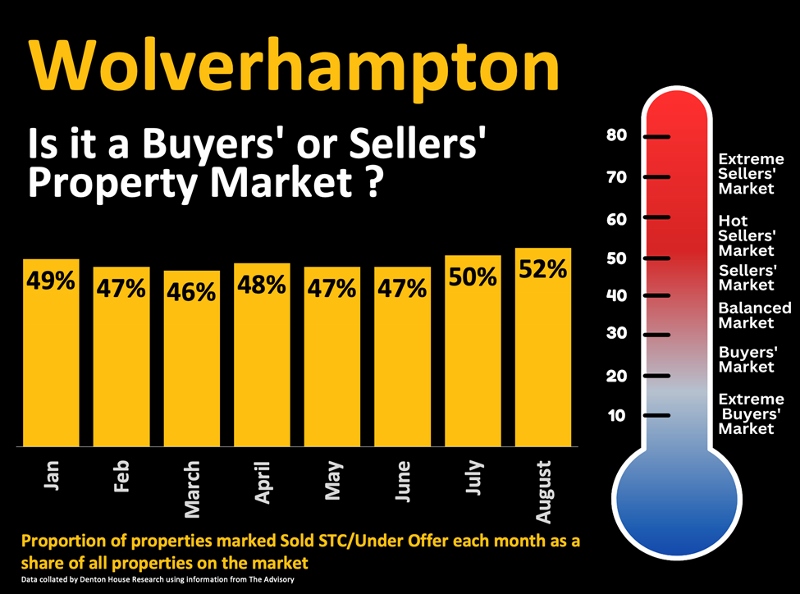
These percentage figures are an average of the Wolverhampton postcodes (as noted above).
For interest, if we break down the August 2025 figure by individual Wolverhampton postcodes, it actually tells an even more interesting story…
- WV1 – 55%
- WV2 – 48%
- WV3 – 51%
- WV4 – 50%
- WV6 – 43%
- WV10 – 51%
- WV11 – 65%
Look at the difference between the postcodes!
So, what does a 52% "Sold STC to total stock" ratio mean for Wolverhampton right now?
It places the local market at the lower end of a hot sellers’ market. Sellers have the advantage and buyers need to bring their best game.
For Wolverhampton Sellers
We are firmly in a market where patience, presentation, and accurate pricing matter more than ever. Buyers now have a choice, a lot of choice. Simply listing your property and hoping for the best will not cut it.
The homes that sell are those that hit the market with the right price from day one, have high-quality photography, clear floor plans, strong virtual/video tours, and marketing that stretches both online and offline.
Overpricing is the fastest way to stall a sale. Properties that linger usually face price reductions, lose momentum, and invite lower offers. In some cases, that even leads to failed sales before the exchange.
Getting it right at launch is critical.
The good news is the recent interest rate cut provides a welcome tailwind as first-time buyers are seeing lower monthly payments, encouraging more of them into the market and strengthening chains. Also, home movers can access better fixed-rate deals, helping them upsize, remortgage, and release more homes onto the market to buy. Finally, buy-to-let investors in Wolverhampton's stronger-yielding areas may see the sums stacking up again.
Buyer sentiment is shifting. Rate cuts show the Bank of England wants growth and stability, which converts hesitant "wait and see" buyers into active "let's book a viewing" buyers.
This is not a one-off. The cut follows earlier reductions since late 2024. This means mortgage rates are more palatable, with some two-year fixes, at the time of writing, being below 3.75% on a 60% loan-to-value (LTV) basis, and an impressive 3.86% on a 5-year fixed (60% LTV). For first-time buyers with a 5% deposit, a 3-year fixed 4.78% rate on a 95% LTV mortgage looks pretty fair.
For Wolverhampton Buyers
The market is calmer than the frenzy of 2021 and 2022. There is time to think, compare, and in some cases negotiate. That does not mean you can wait indefinitely or fire in lowball offers. The best homes are still competitive, but opportunities exist if you are open-minded and look beyond the most sought-after postcodes. Have your mortgage agreement in principle ready before making an offer. It sets you apart and gives sellers confidence. Also, consider widening your search area, as value is often found just beyond the obvious hotspots.
Final Thoughts on the Wolverhampton Property Market
With inflation rising slightly (meaning interest rates won’t be coming down too much in the near future) and the Government finances looking a little squeaky, while the UK’s (and Wolverhampton's) property market is enjoying a steadier footing, realistic pricing is the ultimate and most important thing in marketing a property. Remember last month, only 50.9% of homes that left estate agents' books ended up being sold and the homeowner moving (the rest being withdrawn from the market unsold). Of course, you might not get what you would've got a few years ago in the crazy years of 2020 and 2021, but the price you'll have to pay on the next one won't be as much either.
If you are considering a move within the next six months or would like to explore your options, let's talk. And even if you are not moving, I would love to hear your thoughts on where you see the Wolverhampton market heading.



